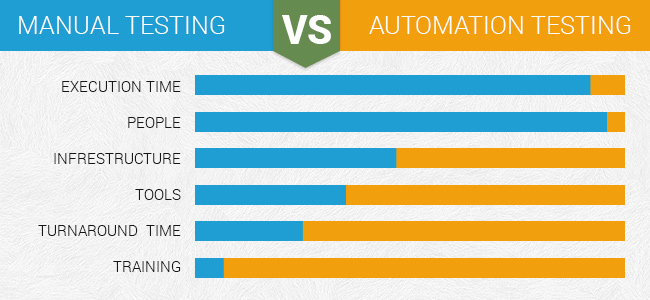Imagine purchasing a house and finding out that it has numerous problems; you’d probably be frustrated, angry, and feel like cheated. Likewise, releasing software with bugs can leave users unhappy and cause damage to the brand reputation.
Automated testing can help prevent these issues. Read on to find out why it’s better than manual testing.
1. Saves Time
Automation testing can save significant time and money as compared to manual testing. It eliminates the risk of human error and generates consistent test results. In addition, it helps teams focus on more important tasks like deciding upon advanced testing metrics or writing new tests.
A good automated testing framework will enable testers to write test scripts that interact with your UI and replicate actions, similar to how a user would do them. This will help you to detect even the smallest imperfections that can be difficult for humans to catch. Automated software testing also enables you to run tests repeatedly, which helps identify defects early in the development process and reduces the cost of fixing them later in the release cycle.
However, it is important to remember that not all applications require automation testing. For instance, if your application is still in the early stages of development and has a complex design, then manually testing may be more efficient. Additionally, if you’re conducting User Acceptance Testing (UAT), which requires the involvement of end-users, then it’s best to skip automation testing. Ultimately, you should decide whether or not to use automation testing on a case-by-case basis and consider factors such as the number of test cases in your test suite, how complex the application is, and how many different platforms your software is being used on.
2. Increases Productivity
Using automation testing eliminates human error, and ensures that each test is carried out correctly every time. This is especially helpful for complex and lengthy test scenarios, which could easily lead to a faulty assurance just by a distraction. With automated testing, you can simply develop a robust test script once and execute it multiple times to verify that your software works as expected.
Automated testing can also be scheduled to run at any given time, from any location. This enables a wide range of devices, operating systems, and browsers to be tested simultaneously without having to be physically present. This is a huge advantage, particularly for companies that need to release new features quickly.
With automation, it is also possible to perform exploratory tests, a process that involves testing “unknown unknowns” to find bugs and issues that may not be covered by existing test cases. This can help your team find critical defects that would otherwise be missed by standard manual tests.
Automation can be an extremely valuable tool for QA engineers, and it should be considered as a part of your overall quality assurance strategy. By reducing the amount of tedious and repetitive work, it frees up time for engineers to focus on value-add tasks that increase productivity and morale. This helps your business deliver a higher quality product and improve customer satisfaction.
3. Increases Test Coverage
One of the most important benefits of automation testing is that it increases test coverage. Manual testers can only test a limited amount of the functionality of an application. However, automated tests can be run as many times as needed, making it possible to test every corner of an application. This allows developers to find bugs and errors that may not have been caught by manual testing.
Automated testing is also able to run tests in parallel, which can reduce test execution time. This means that a single test can be run on multiple devices, browsers, and operating systems simultaneously. This can be especially helpful when testing a complex web application. It can help ensure that all necessary tests are performed and that the application works correctly on different environments.
Another advantage of automated testing is that it eliminates the need to repeat manual regression tests. This can save significant time and money. Automated regression testing can also free up manual testers to perform more valuable tasks.
It’s important to understand the application’s functionality and behavior before starting to test it with an automation tool. This will help you identify the best test cases to automate. In addition, it’s essential to choose a tool that can provide immediate feedback on test results. This will allow developers to quickly fix any problems with the application.
4. Reduces Risk
One of the main benefits that automation testing offers is a reduction in the risk associated with software release. By identifying and repairing bugs before they are released to the public, automated testing reduces the likelihood of an app crash or other problem causing frustration for users. This allows teams to provide more timely feedback and accelerate the process of delivering new software programs.
Automated testing can also help to improve test coverage. By running more tests with a higher frequency, automated testing can identify issues that may have been missed during manual testing due to time constraints. This results in a more reliable and accurate product.
However, it’s important to note that not all testing can be automated. User Acceptance Testing (UAT), for example, involves end-users testing the software in their own environment and requires a unique perspective that is difficult to replicate. It’s best to use UAT as a supplement to automated testing and not as a replacement.
Another benefit of automated testing is that it reduces the need to have manual testers on hand to run and monitor test scripts frequently. This saves businesses money in terms of human resources and reduces the chance of a glitch going unnoticed. This helps to improve business productivity, resulting in a better return on investment for the software development team.

